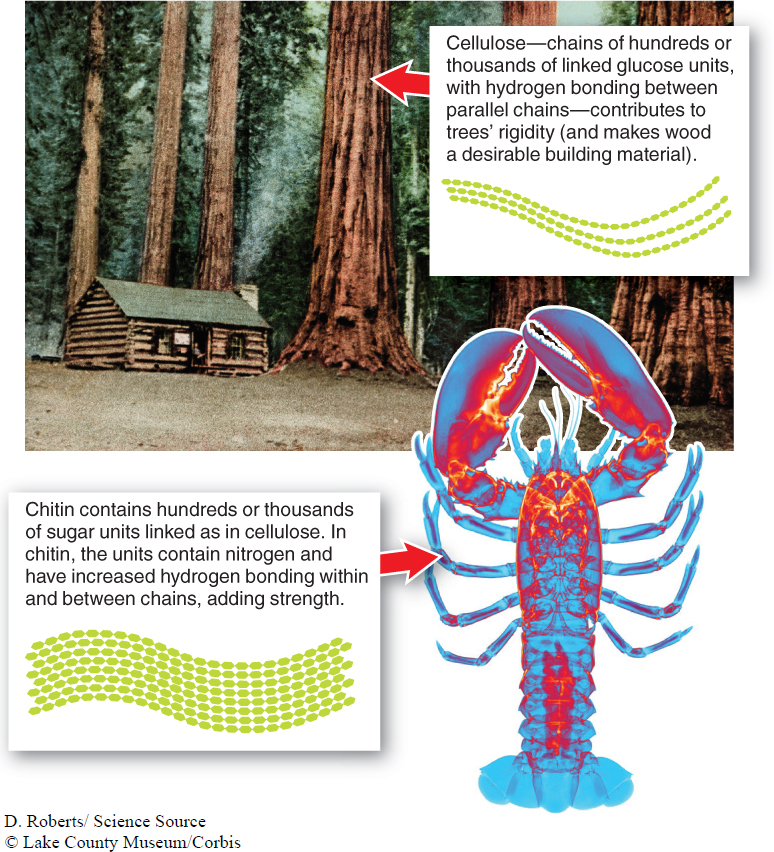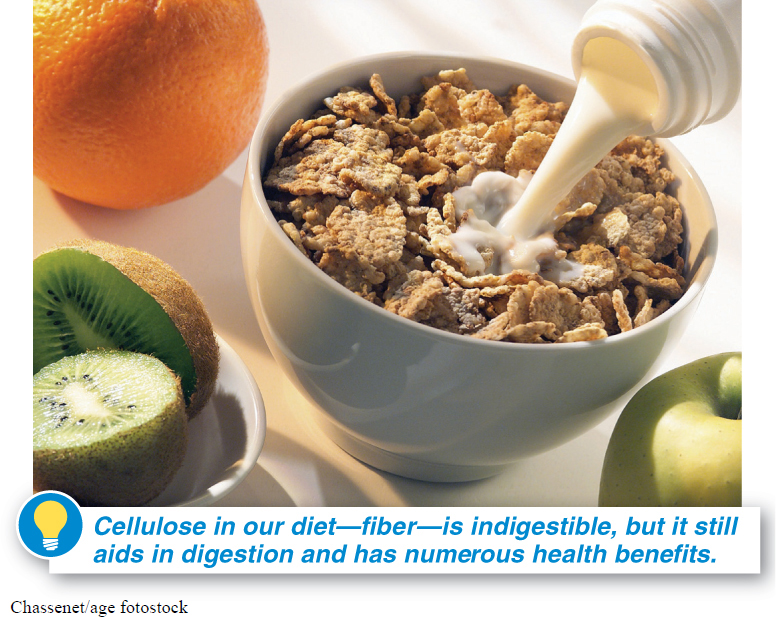Despite their general importance as a fuel source for humans, not all carbohydrates can be broken down by our digestive system. Two different complex carbohydrates—

Surprisingly, cellulose is almost identical in composition to starch. Nonetheless, because of one small difference in the chemical bond between the simple sugar units, cellulose has a slightly different three-
60
Although it is not digestible, cellulose is still important to human diets. The cellulose in our diet is known as “fiber” (FIGURE 2-27). It is also appropriately called “roughage” because, as the cellulose of celery stalks and lettuce leaves passes through our digestive system, it scrapes the wall of the digestive tract. Its bulk and the scraping stimulate the more rapid passage of food and the unwanted, possibly harmful products of digestion through our intestines. That is why fiber reduces the risk of colon cancer and other diseases (but it is also why too much fiber can lead to diarrhea).

Unlike humans, termites have microorganisms living in their gut that are able to break down cellulose. That’s why they can chew on wood and, with the help of the cellulose-
TAKE-HOME MESSAGE 2.11
Some complex carbohydrates, including chitin and cellulose, cannot be digested by most animals. Such indigestible carbohydrates in the diet, called fiber, aid in digestion and have many health benefits.
If humans cannot digest cellulose, why is it a helpful component of our diet?
Dietary cellulose is called fiber, and it helps move materials through the digestive system.
61